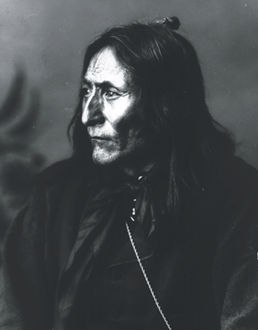Browse "Politics & Law"
-
Article
Criminal Capacity
Two main groups of people lack capacity for criminal responsibility - the very young and the mentally disordered.
"https://development.thecanadianencyclopedia.ca/images/tce_placeholder.jpg?v=e9dca980c9bdb3aa11e832e7ea94f5d9" // resources/views/front/categories/view.blade.php
https://development.thecanadianencyclopedia.ca/images/tce_placeholder.jpg?v=e9dca980c9bdb3aa11e832e7ea94f5d9
-
Article
Criminal Code of Canada
Canada’s Criminal Code is a federal statute. It was enacted by Parliament in accordance with section 91(27) of the Constitution Act, 1867, which gives the federal government exclusive jurisdiction to legislate criminal offences in Canada. The Criminal Code contains most of the criminal offences that have been created by Parliament. Other criminal offences have been incorporated into other federal statutes. The Code defines the types of conduct that constitute criminal offences. It establishes the kind and degree of punishment that may be imposed for an offence, as well as the procedures to be followed for prosecution.
"https://development.thecanadianencyclopedia.ca/images/tce_placeholder.jpg?v=e9dca980c9bdb3aa11e832e7ea94f5d9" // resources/views/front/categories/view.blade.php
https://development.thecanadianencyclopedia.ca/images/tce_placeholder.jpg?v=e9dca980c9bdb3aa11e832e7ea94f5d9
-
Article
Criminal Investigation
Criminal investigation involves the investigation of violations of CRIMINAL LAW.
"https://development.thecanadianencyclopedia.ca/images/tce_placeholder.jpg?v=e9dca980c9bdb3aa11e832e7ea94f5d9" // resources/views/front/categories/view.blade.php
https://development.thecanadianencyclopedia.ca/images/tce_placeholder.jpg?v=e9dca980c9bdb3aa11e832e7ea94f5d9
-
Article
Criminal Law
Criminal law, in its widest sense, includes substantive criminal law, the operation of penal institutions, criminal procedure and evidence, and police investigations (see Criminal Investigation). More precisely, the term refers to substantive criminal law - a body of law that prohibits certain kinds of conduct and imposes sanctions for unlawful behaviour.
"https://development.thecanadianencyclopedia.ca/images/tce_placeholder.jpg?v=e9dca980c9bdb3aa11e832e7ea94f5d9" // resources/views/front/categories/view.blade.php
https://development.thecanadianencyclopedia.ca/images/tce_placeholder.jpg?v=e9dca980c9bdb3aa11e832e7ea94f5d9
-
Article
Criminal Procedure
Criminal procedure is an integral but distinct part of CRIMINAL LAW in Canada.
"https://development.thecanadianencyclopedia.ca/images/tce_placeholder.jpg?v=e9dca980c9bdb3aa11e832e7ea94f5d9" // resources/views/front/categories/view.blade.php
https://development.thecanadianencyclopedia.ca/images/tce_placeholder.jpg?v=e9dca980c9bdb3aa11e832e7ea94f5d9
-
Editorial
Isapo-muxika (Crowfoot) and Treaty 7
The following article is an editorial written by The Canadian Encyclopedia staff. Editorials are not usually updated.
"https://d2ttikhf7xbzbs.cloudfront.net/media/media/f8dad739-53dc-468e-80b8-27bf80b69c29.jpg" // resources/views/front/categories/view.blade.php
https://d2ttikhf7xbzbs.cloudfront.net/media/media/f8dad739-53dc-468e-80b8-27bf80b69c29.jpg
-
Article
Crown
In a monarchy, the Crown is an abstract concept or symbol that represents the state and its government. In a constitutional monarchy such as Canada, the Crown is the source of non-partisan sovereign authority. It is part of the legislative, executive and judicial powers that govern the country. Under Canada’s system of responsible government, the Crown performs each of these functions on the binding advice, or through the actions of, members of Parliament, ministers or judges. As the embodiment of the Crown, the monarch — currently King Charles III — serves as head of state. The King and his vice-regal representatives — the governor general at the federal level and lieutenant-governors provincially — possess what are known as prerogative powers; they can be made without the approval of another branch of government, though they are rarely used. The King and his representatives also fulfill ceremonial functions as Head of State.
"https://d2ttikhf7xbzbs.cloudfront.net/Royal_Coat_of_Arms_of_the_United_Kingdom.svg.png" // resources/views/front/categories/view.blade.php
https://d2ttikhf7xbzbs.cloudfront.net/Royal_Coat_of_Arms_of_the_United_Kingdom.svg.png
-
Article
Crown Corporation
Crown corporations are wholly owned federal or provincial organizations that are structured like private or independent companies. They include enterprises such as the Canadian Broadcasting Corporation (CBC), VIA Rail, Canada Post and the Bank of Canada; as well as various provincial electric utilities. Crown corporations have greater freedom from direct political control than government departments. As long as crown corporations have existed, there has been debate about their structure, accountability and role in the economy.
"https://d2ttikhf7xbzbs.cloudfront.net/media/new_article_images/HockeyNightInCanada/626px-CBC_logo_1940–1958.png" // resources/views/front/categories/view.blade.php
https://d2ttikhf7xbzbs.cloudfront.net/media/new_article_images/HockeyNightInCanada/626px-CBC_logo_1940–1958.png
-
Article
Crown Grant to the Mohawks of the Bay of Quinte
The Crown Grant to the Mohawks of the Bay of Quinte, also known as Treaty 3½ or the Simcoe Deed, was issued in 1793. (See also Haudenosaunee and Tyendinaga Mohawk Territory.) Ten years earlier, the Crawford Purchase had acquired a large piece of territory. The British granted a small portion of this purchase to the Mohawks in recognition of their support to the Crown during the American Revolution. Gradually, the Crown grant was reduced due to encroachment by non-Indigenous settlers. The ownership of the land is still being contested. (See also Treaties with Indigenous Peoples in Canada and Upper Canada Land Surrenders.)
"https://d2ttikhf7xbzbs.cloudfront.net/media/new_article_images/Tyendinaga/LandingOfTheMohawks.jpg" // resources/views/front/categories/view.blade.php
https://d2ttikhf7xbzbs.cloudfront.net/media/new_article_images/Tyendinaga/LandingOfTheMohawks.jpg
-
Article
CRTC
CRTC (Canadian Radio-Television and Telecommunications Commission/Conseil de la radiodiffusion et des télécommunications canadiennes). Established by the Broadcasting Act in 1968 it is an independent agency that regulates and supervises all sectors of the Canadian broadcasting system, including AM and FM radio, television, cable, pay-TV and specialty services.
"https://development.thecanadianencyclopedia.ca/images/tce_placeholder.jpg?v=e9dca980c9bdb3aa11e832e7ea94f5d9" // resources/views/front/categories/view.blade.php
https://development.thecanadianencyclopedia.ca/images/tce_placeholder.jpg?v=e9dca980c9bdb3aa11e832e7ea94f5d9
-
Article
CRTC
CRTC (Canadian Radio-Television and Telecommunications Commission/Conseil de la radiodiffusion et des télécommunications canadiennes).
"https://development.thecanadianencyclopedia.ca/images/tce_placeholder.jpg?v=e9dca980c9bdb3aa11e832e7ea94f5d9" // resources/views/front/categories/view.blade.php
https://development.thecanadianencyclopedia.ca/images/tce_placeholder.jpg?v=e9dca980c9bdb3aa11e832e7ea94f5d9
-
Macleans
Cuba Downs US Planes
In the end, the protest sputtered out, a victim of high seas and bad weather in the choppy Straits of Florida. The 35 boats and several private planes that set out from Key West, Fla.This article was originally published in Maclean's Magazine on March 11, 1996
"https://development.thecanadianencyclopedia.ca/images/tce_placeholder.jpg?v=e9dca980c9bdb3aa11e832e7ea94f5d9" // resources/views/front/categories/view.blade.php
https://development.thecanadianencyclopedia.ca/images/tce_placeholder.jpg?v=e9dca980c9bdb3aa11e832e7ea94f5d9
-
Macleans
Cuban Dissidents Lose Hope
EITHER MANUEL Vásquez Portal was an idealist, a romantic hero who fought for freedom and democracy in a country where neither exist. Or he was a fool, for waging a public-opinion battle against a dictatorship where public opinion does not exist either.This article was originally published in Maclean's Magazine on March 21, 2005
"https://development.thecanadianencyclopedia.ca/images/tce_placeholder.jpg?v=e9dca980c9bdb3aa11e832e7ea94f5d9" // resources/views/front/categories/view.blade.php
https://development.thecanadianencyclopedia.ca/images/tce_placeholder.jpg?v=e9dca980c9bdb3aa11e832e7ea94f5d9
-
Article
Canada and the Cuban Missile Crisis
The Cuban Missile Crisis lasted from 16 to 28 October 1962. The Soviet Union had stationed nuclear missiles in Cuba, which posed a threat to the United States and Canada. It brought the world to the edge of nuclear war. Canadian armed forces were placed on heightened alert. Prime Minister John Diefenbaker’s hesitant response to the crisis soured already tense relations between Canada and the US and led to the downfall of his government in 1963.
"https://d2ttikhf7xbzbs.cloudfront.net/media/new_article_images/CubanMissileCrisis/578px-Kubkrise1962MRBMSite3.jpg" // resources/views/front/categories/view.blade.php
https://d2ttikhf7xbzbs.cloudfront.net/media/new_article_images/CubanMissileCrisis/578px-Kubkrise1962MRBMSite3.jpg
-
Article
Cultural Duality
Contemporary observers who may not be thoroughly familiar with the history behind Canadian cultural dualism often have trouble in decoding it. Although the idea of cultural duality appears in laws, in policies on education, religion and language, and in the formulation of the fundamental rights of the provinces, its historical foundations remain hard to define.
"https://d2ttikhf7xbzbs.cloudfront.net/media/media/eb6ec132-1f25-4df9-b54d-d101ef2e4e7e.jpg" // resources/views/front/categories/view.blade.php
https://d2ttikhf7xbzbs.cloudfront.net/media/media/eb6ec132-1f25-4df9-b54d-d101ef2e4e7e.jpg
